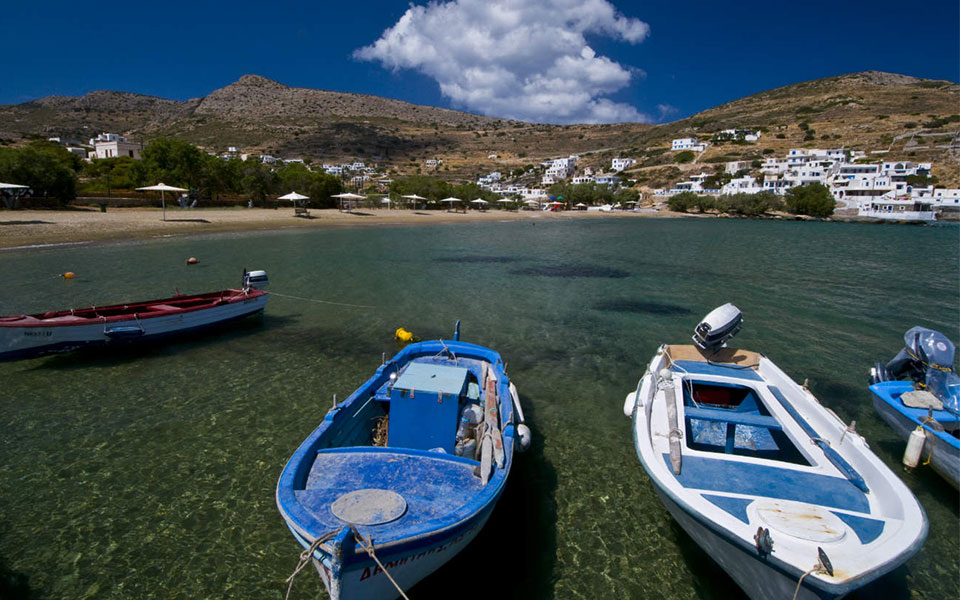“I bet you don’t believe me, but I’m going to de-sun you!” Maria Arsenikou proclaimed when she saw me looking peaky after a day under the hot Cycladic sun.
The “de-sunning” she was talking about is an old custom practiced by island women, who believe they can cure sunstroke with a piece of cloth and some secret prayers.
“You take a long piece of cloth and measure it in palm widths. Then you turn it to the person who ‘got the sun,’ say the prayer and measure the cloth again. If it’s a palm shorter, you know they have sunstroke. If it stays the same, then they don’t. You do it again and again until the sunstroke is gone and the cloth is back to its normal size,” she explained at length.
And even though I didn’t believe a word of it, it made me fall in love with Sikinos a little bit more.
It is customs like these and other old-school habits that have earned Sikinos a reputation for being an “authentic,” “unspoiled” and “alternative” destination.
There is also, of course, the fact that it doesn’t have a tremendous amount of tourism – at least for now.
What it does have is an incredibly bright natural light and energy. With a population of 250 give or take, Sikinos is basically a rock with a few beaches, a smattering of rooms-to-let and tavernas, and a handful of bars.
It’s the kind of place where you spend your days reading on the beach, ambling around collecting capers, drinking honey-sweetened raki and listening to Father Thodoros playing his fiddle and singing “I first fell in love in the village, now I love in the castle” – simple pleasures in abundance.
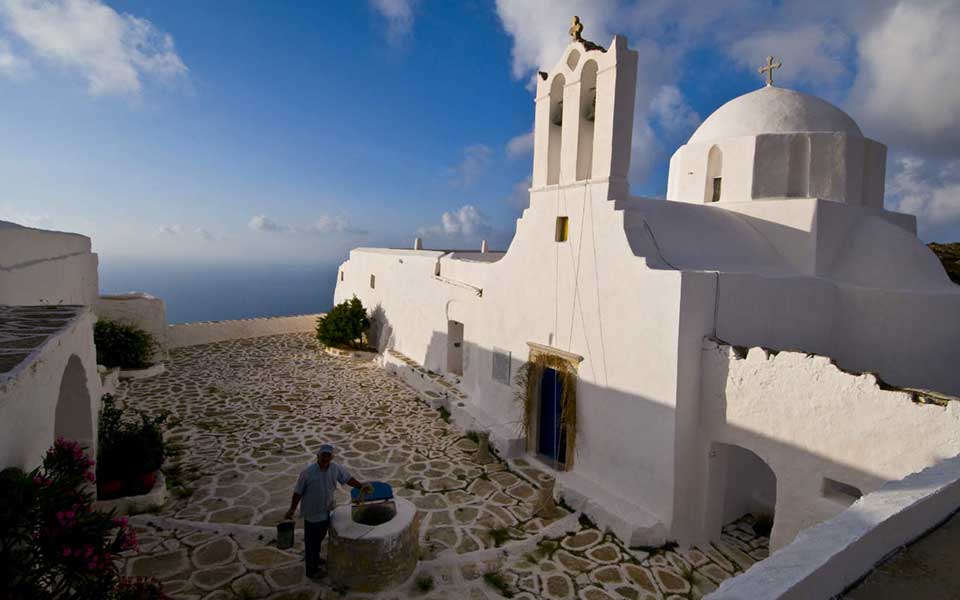
© Clairy Moustafellou
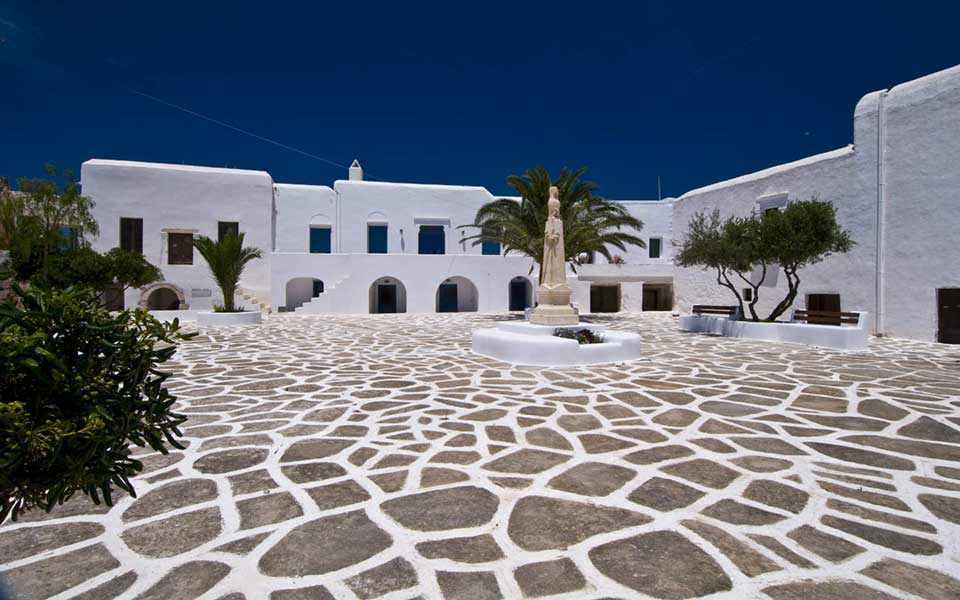
© Clairy Moustafellou
The Hora of Sikinos
Like most islands, Sikinos’ main town is called Hora. This lovely Cycladic settlement is separated into three areas: Kastro (“Castle”), Vouni (“Hill”) and Horio (“Village”) on the other side of the valley.
With whitewashed houses, geraniums and prickly pears, one grocery store, a bookshop that hosts all sorts of art events, a few small tavernas and some nice bars, Kastro is the prettiest area, and also where everyone goes out at night.
There’s also a cobbled footpath leading to the late 17th-century Monastery of Hrysopigi (or Zoodochou Pigis), perched at the top of the settlement.
According to local lore, when pirates managed to lay siege to Hora and breach the walls of the monastery after surviving the embrasures and murder holes, the nuns threw themselves off the cliff rather than risk being raped and dishonored. Another local tale asserts that the locals would use the same escape route during pirate raids, scaling down the cliff on ropes.
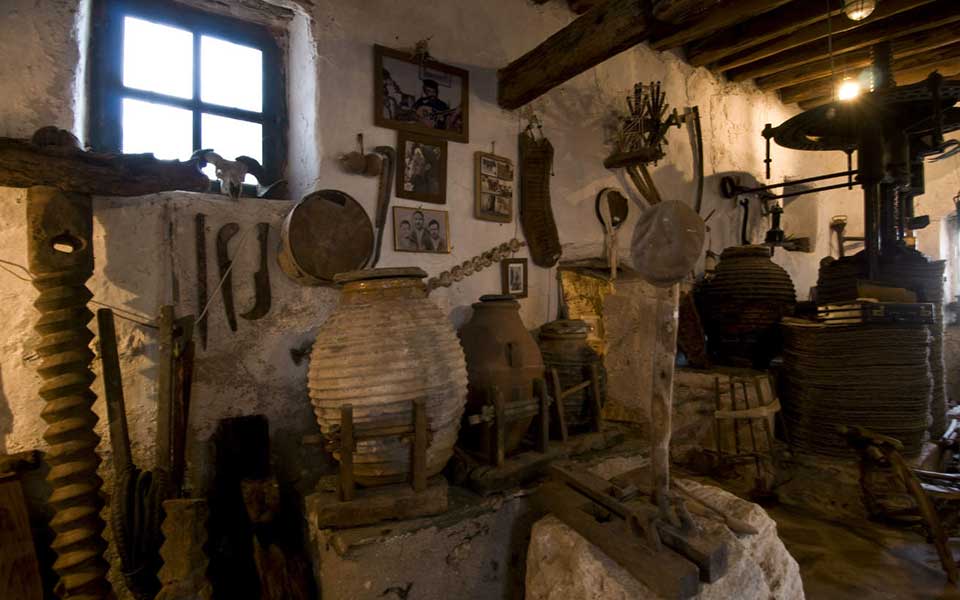
© Clairy Moustafellou
Nevertheless, the view to the sea is magical, as is walking around Hora and even around Horio, the newest neighborhood and once home to political prisoners exiled by the 1936-1940 dictatorship of Ioannis Metaxas. Many of those old residences have now been bought by foreign visitors, who have restored them.
The old olive oil mill is now home to the Folklore Museum, while the islanders’ pride and joy, the old school that was built in 1900 with a donation from benefactor Andreas Syngrou, lies between the two villages.
As I wandered around the sparkling white narrow streets, my nostrils were assailed by the smell of melting wax – beeswax to be precise. I investigated and in a small courtyard came across Maria, my de-sunner, with another three ladies, sitting in a circle and producing another of the island’s famed products.
Party Like a Local at the Panigyria of Sikinos
Here on Sikinos, the local women still make the candles used at church fetes, “panigyria”, and as offerings to the saints. “You take the wax from the honeycomb, melt it in a pot and then pour it into a bowl to cool. Then you take that chunk and cook it over the coals, so that you can shave it with a spoon,” the ladies explained. The shavings are then molded by hand around the wick.
“We get together before celebrations and make more than 70 candles for each church fete. Now the fetes are really something worth seeing,” they tell me.
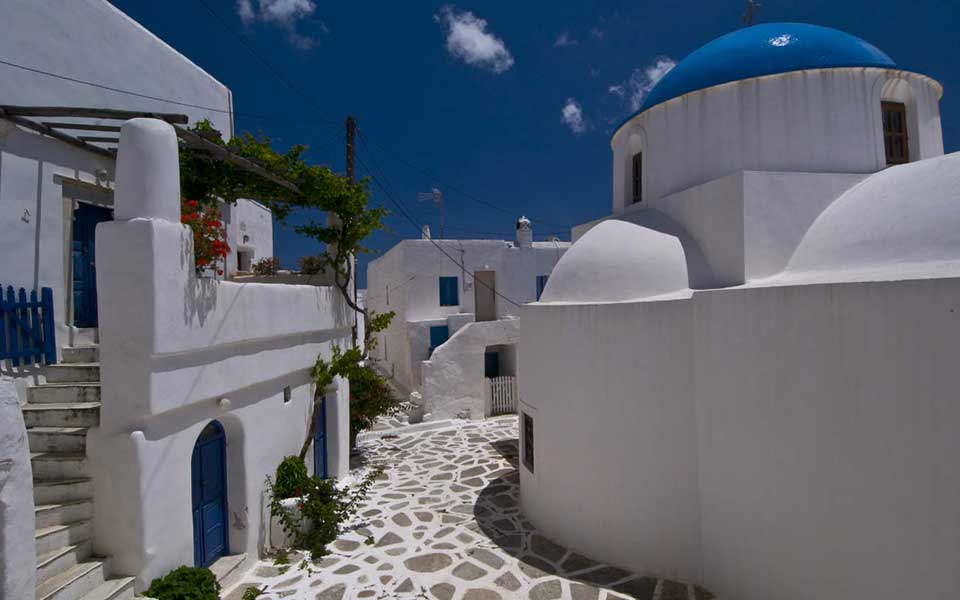
© Clairy Moustafellou
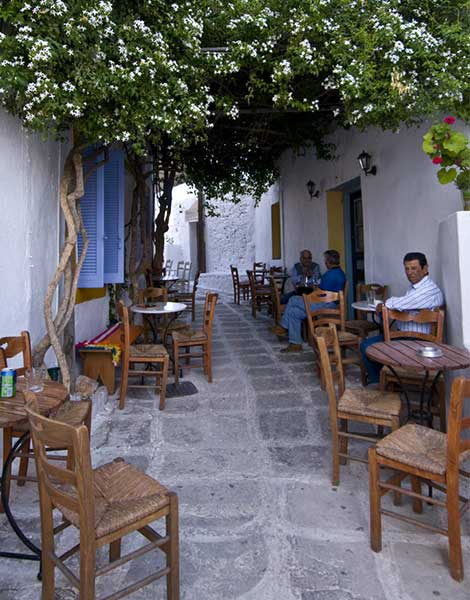
© Clairy Moustafellou
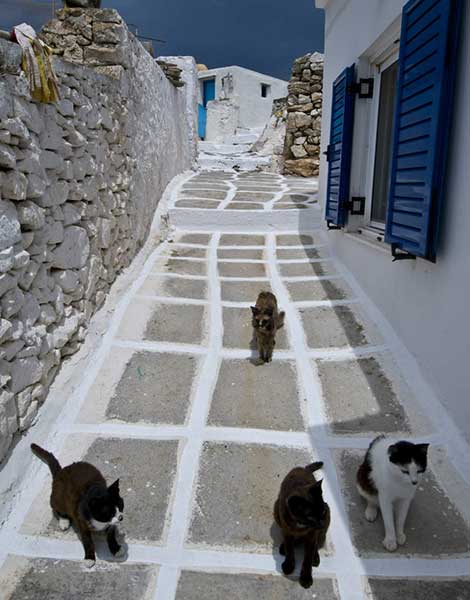
© Clairy Moustafellou
And the truth is that they’re definitely worth experiencing, at some point, if permitted by the panigyras or “guardian” of the “panigyri”.
The panigyras is assigned the responsibility of guarding a copy of the treasured icon at his house for the entire year from one “panigyri” to the next, anointing it with holy water three times a day, keeping the oil lamp illuminating it burning and organizing the entire party on the saint’s feast day, including all the whitewashing, the candles, the special bread and the food.
There are four major feast days on Sikinos for the churches of Pantanassa, Timiou Stavrou, Eisodion tis Theotokou and Zoodochou Pigis, and as many guardians. Because of the huge demand to have the honor of serving as the panigyras, many islanders may never get the chance. They’re registered for the task at birth in the hope that they’ll be able to serve in their old age, or that their children will serve in their stead.
As our conversation on candles and customs continued, the ladies turned their hand to making pasteli sesame snaps and melitinia, a traditional local mini-pie made with mild myzithra cheese, sugar, vanilla, flour, eggs and semolina flour.
One started boiling the honey, the other grabbed a rolling pin and the third walked me through every detail of the recipes.
“Do the island’s young women make them?” I ask.
“No! We beg them but they just won’t sit down to learn. Seeing as you care, we’ll show you.” So there I sat, learning.
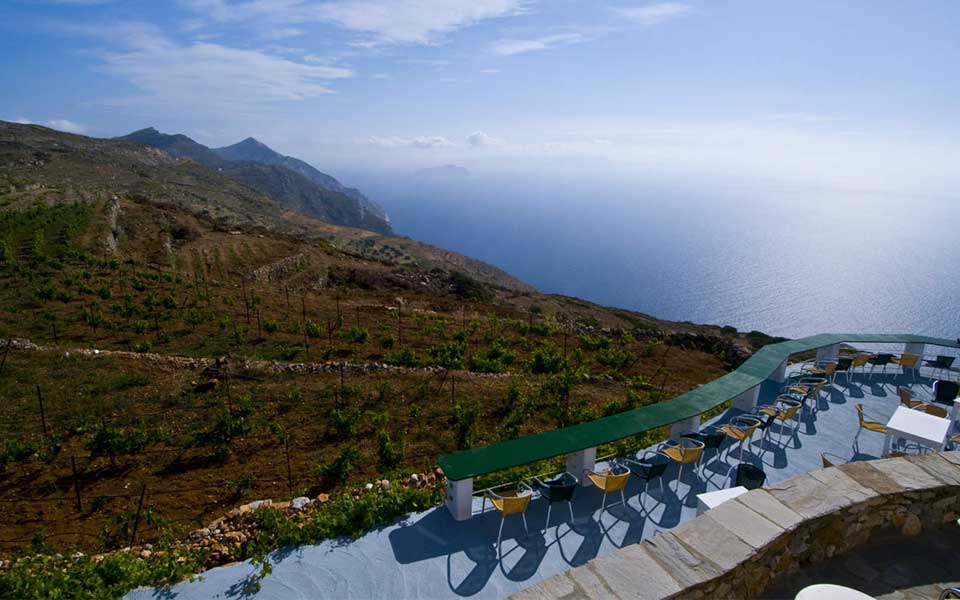
© Clairy Moustafellou
Land of Wine and honey
The custom of making candles and pasteli may still be alive as a result of the abundance of the necessary ingredients on the island, which has apiaries just about everywhere. The roughly 10 tons of honey that Sikinos produces a year is regarded as among the best in Greece so it sells out fast.
The practice is believed to date to ancient times, as an ancient coin found here dating to 300 BC depicts a bunch of grapes on one side and a bee on the other.
The grapes point to another important chapter of Sikinos’ history, which concerns its excellent wine, known since ancient times. The native grape varieties fell out of favor over the course of the centuries, though some vintners have started growing them again in the past couple of decades.
Key among them is Giorgos Manalis, who cultivates long-forgotten native grapes grown from a few branches salvaged by old-timers. With patience and persistence, he has created an impressive, three-hectare environmentally friendly vineyard on a shaded hillside of the island’s ragged northwestern mountains.
“It’s the Meltemi winds that do all the hard work, the dew we call Askeronas that is created by the iodine and the salt when the northerlies pick up,” he says, explaining the success of Sikinos’ wine.
His winery is also a success and is open to the public. It operates on renewable energy, produces four heavenly wines – the Sikionos White, Red, Rose and Liosato – has a restaurant, hosts exhibitions and special events, and has one of the loveliest verandas in the Cyclades with an insane sea view.
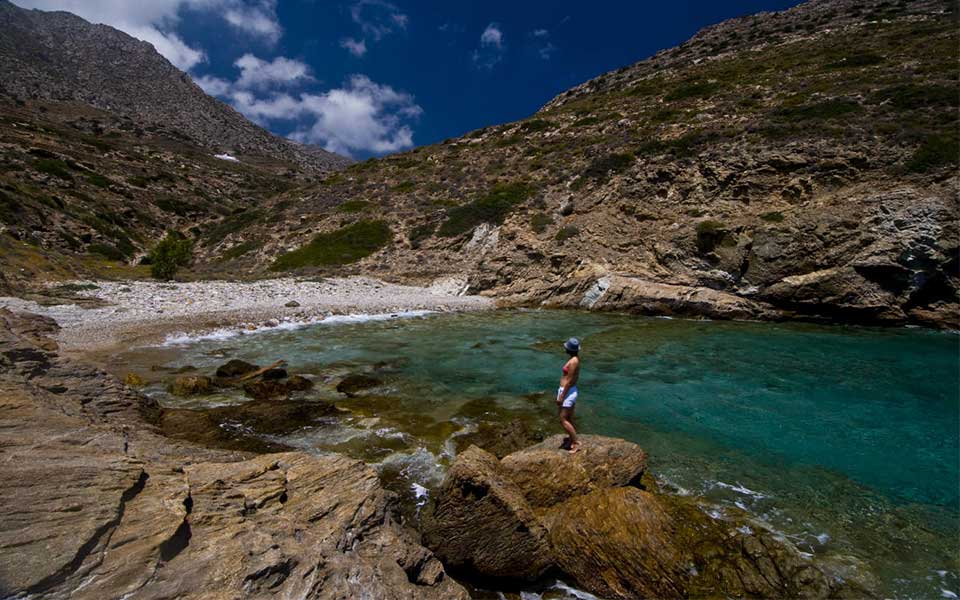
© Clairy Moustafellou
Where to Swim
“There is no harbor at Sikinos and we had to land at Aghios Bournias, a wretched anchorage that must be approached from the south-southeast and where you have to drag the caique onto dry land,” French traveler Joseph Pitton de Tournefort lamented in 1700. And this did not change until 288 years later.
Sikinos’ port was built in 1988, ending the need for ships to anchor at sea and ferry goods and passengers to shore on small boats, at a spot known locally as Alopronia. This spot is where you will find one of the island’s three easily accessible beaches.
The other two are Aghios Georgios – 5 km from Hora, with natural shade from tamarisk trees and a small taverna – and Dialiskari, 2 km from the port.
Hora is 4.5 km from the port and now that there are places to rent cars and motorcycles on the island, you no longer need to bring your own mode of transportation.
There’s also a bus and a boatman called Dimitris at Alopronia who takes people to five more beaches: Malta, Santorineika, Aghios Panteleimonas, Karas and Ai-Yiannis (all without shade or any other amenities, so go prepared).
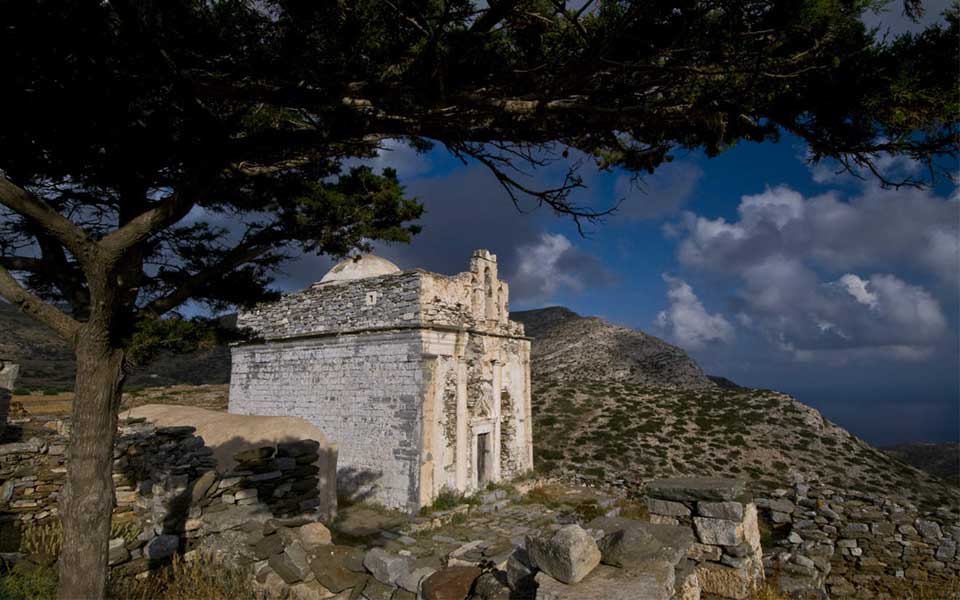
© Clairy Moustafellou
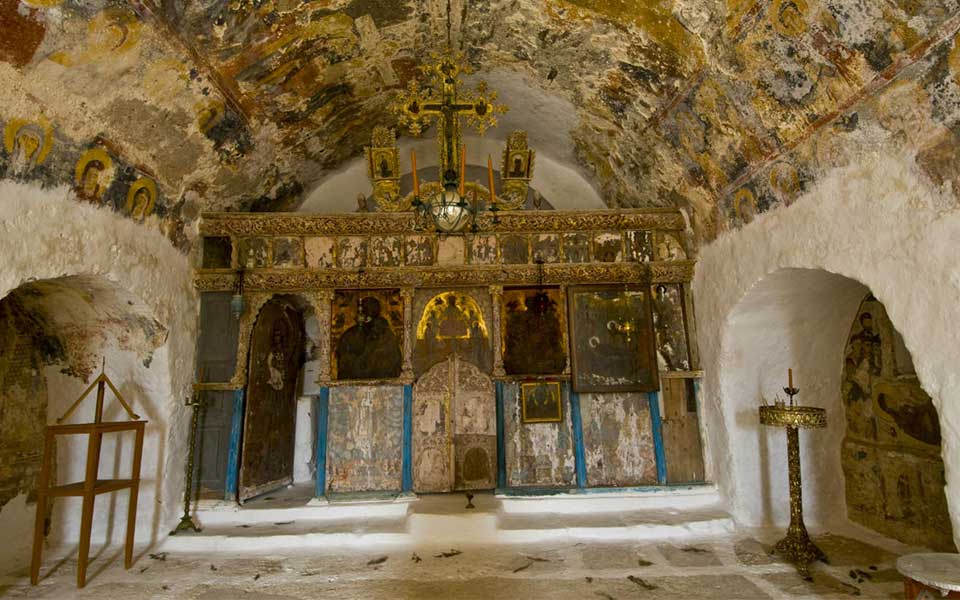
© Clairy Moustafellou
There are some beaches that can be reached by foot along the paths mapped by the Hellenic Society for the Environment and Cultural Heritage. You can also walk or drive to Episkopi, which, quite honestly, is one of the most beautiful monuments in the Cyclades.
This enigmatic building was erected in the middle of nowhere, possibly in the third century, in the form of a Roman mausoleum, though some believe it to have been a temple dedicated to Apollo.
The Church, as is its habit, tried to Christianize it in the 17th century and dedicated it to the Dormition of the Virgin. The additional of a small semi-circular vault, a dome and a three-arched bell tower only made it even more impressive.
Beside it, the Byzantine chapel of Aghia Anna is one of six scattered in remoter parts of Sikinos. This is one of those spots where you can feel the energy seeping into your body.
Two other great “energy spots” are the veranda at Manalis’ Winery and the top of the Chrysopigi cliff at Kastro.
A few moments at any of these locations and you’ll be raring to make candles, pasteli and meltinia – not to mention feel completely un-sunned.

